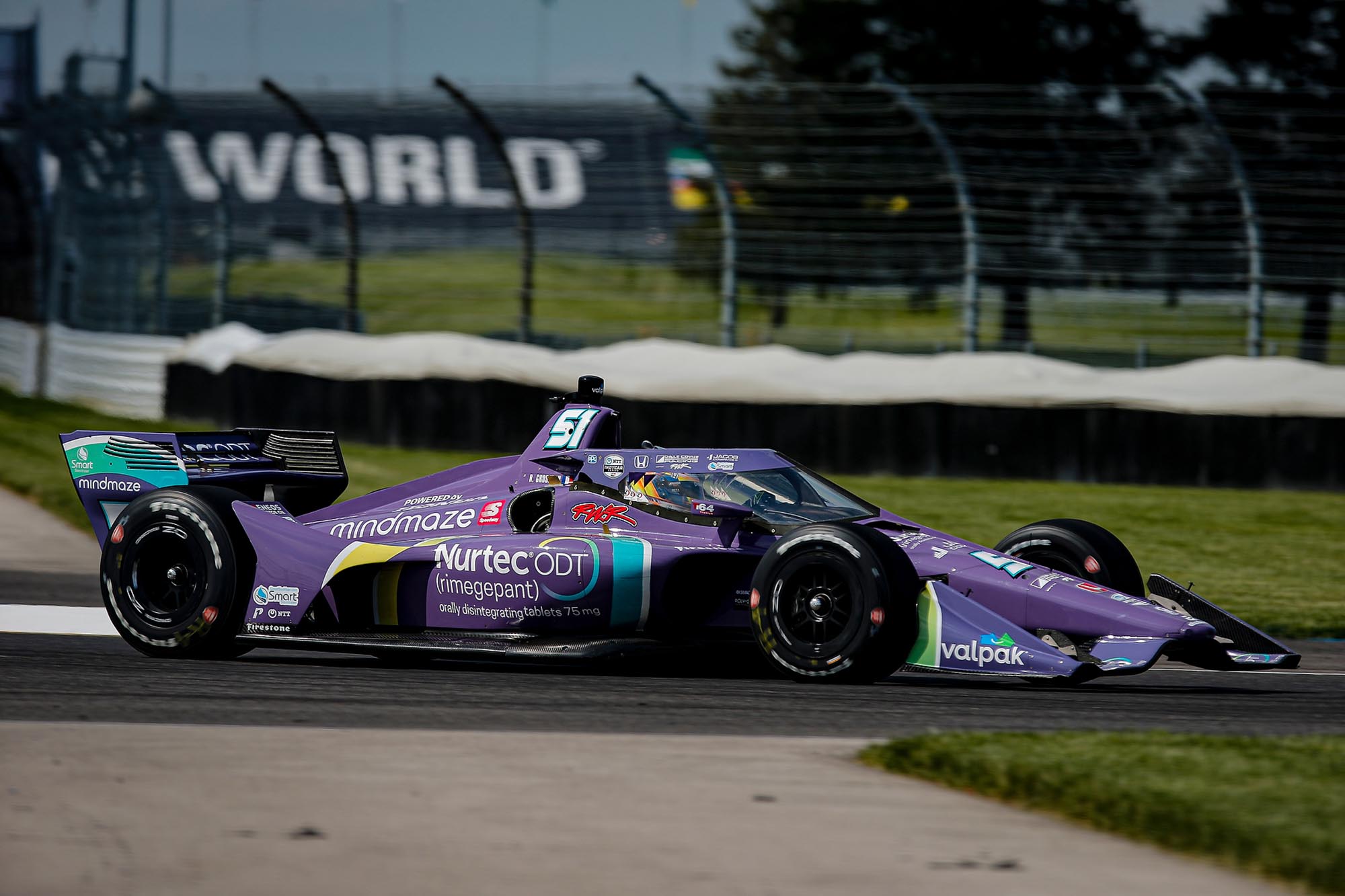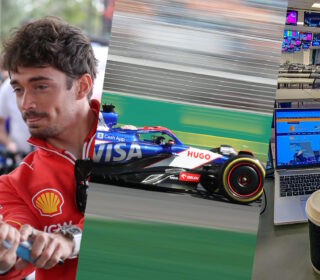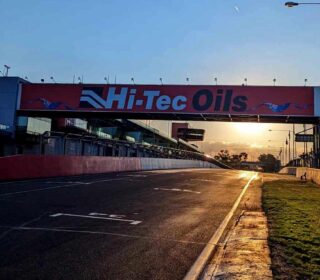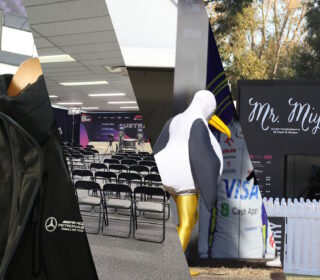ANALYSIS: Why IndyCar’s new TV deal is important

INDYCAR has a new TV deal that could represent an interesting turning point for the world of motorsport on your screens.
The advent of internet-based streaming services grabbing live sports rights has been shaking up the broadcasting industry, but so far Motorsport has broadly been wedged in traditional-style deals centred around a mixture of free-to-air and subscription based deals, with streaming thrown in on the side as an alternative or a bonus.
However, NBC’s new agreement with IndyCar has snuck in some exclusive streaming races for the first time, indicating the start of a shift towards what the industry describes ‘Non Linear’ broadcasting.
On paper the details of the new deal – a three-year extension with NBC – seem fairly straightforward, however the devil is in the details.
13 of the planned 17 races in 2022 will be shown on the main NBC Network, which represents a significant increase of free-to-air coverage for the series in the world’s largest TV market.
With the forthcoming shutdown of NBC’s dedicated ‘NBC Sports Network (NBCSN)’ cable channel, three of the planned events will be shown on the similar USA Network, also owned by the broadcaster.
The most fascinating part of the deal comes with news that two of the races will be shown exclusively on Peacock, NBC’s dedicated streaming service.
This is a big move by NBC, who clearly hung the carrot in front of IndyCar executives of more network airtime in exchange for getting two races exclusively for their digital platform, which requires users to pay US$4.99 per month to access.
To put it in an Australian context: for NBC think Channel 7, for USA Network think Fox Sports and for Peacock, think Kayo.
The INDYCAR – NBC partnership has been a success for the series thanks to ratings that have grown 30% year on year; the first nine races of the 2021 season delivering an average audience of more than 1.5 million people per race.
In May, the 105th running of the Indianapolis 500 drew 5.5 million viewers to NBC making it the most-watched race since 2016.
The new deal is only likely to help those numbers grow further and is doubly significant: in 2021 only eight NASCAR Cup Series races are set to be aired on the main channel, the rest on the cable NBCSN.
It will unquestionably give IndyCar a massive chance to claw back some of the audience lost to NASCAR racing since the 1996 split of the sport, and the demise of CART in the early 2000s.
While the new NBC deal is clearly good for the series, thanks to the remarkable uptick in races being shown on the main broadcast channel, what it does is offer a fascinating insight into the challenging situation sport finds itself in when it comes to pushing their content out to as big an audience as possible.
“It’s very important and gives us the opportunity to answer the call of the traditional fans while having an opportunity to recruit or attract younger fans, as well.”
IndyCar’s Mark Miles on hedging their bets with their 2022-onwards TV deal
In essence, it feels like both IndyCar and NBC are hedging their bets with this deal.
In a market cleartly not quite ready to go ‘fully digital’, they’re keeping teams, sponsors and died-in-the-wool fans happy by actually increasing the reach of the traditional ‘linear’ way of watching racing on TV.
However, throwing two races exclusively to the streaming service is an interesting roll of the dice that will test the waters for the series, NBC and other broadcasters to see what the demand is like for a streaming-only product.
For instance, imagine if tomorrow Supercars announced that the Queensland Raceway round of this year’s championship was going to air exclusively on Kayo Sports. Seeing how many would take that option up would be fascinating.
As well as showing their two exclusive races, Peacock will show every qualifying session and practice live, Indy Lights races and other exclusive content and it’s there that IndyCar and NBC hope they hold some of the aces.
“A Peacock customer can go and watch every race live on their phone, on their iPad, wherever they wish and our fans want that, our traditional fans want that,” Penske Entertainment Co. CEO Mark Miles, who runs the IndyCar show for The Captain, told motorsport.com.
“It’s very important and gives us the opportunity to answer the call of the traditional fans while having an opportunity to recruit or attract younger fans, as well.”
Miles was bullish about the chances of fans taking advantage of the exclusive Peacock content moving forward.
“Again, the (NBC) network increase provides for certain increases in the eyes of the audience that will watch us online, and NBC’s commitment through Peacock will help us grow a younger fan base going forward which we think is important,” he said.
“And we’ll have more in-car cameras on our app, which is maybe the most appreciated feature on the app, and subject to our ability to deliver the needed level of connectivity, on the IndyCar Series app at our races, a fan will be able to watch the race on the smartphone in their hand while watching the action on the track.”
Those comments have the kind of forward-thinking approach Roger Penske has made famous written all over them.
In fact, that IndyCar has arguably been able to engineer a better TV package despite there being limited interest from other networks in taking up coverage of the sport has Penske’s influence written all over it.
Initial reaction has been broadly positive from within the series and from those who understand what they’re talking about. Naturally, Miles’ reported that IndyCar team owners were thrilled with the increase in the amount of races being shown on the NBC mothership.
Internet comment sections, however, have unsurprisingly been more mixed with the usual chorus of people complaining about the fact they won’t be able to watch two races next year for free.
On the surface it seems to be the usual reactionary internet rubbish from a minority and that’s probably the truth: but it does prove there’s still work to do to get broad acceptance from consumers to a) make the switch to a streaming service and b) pay for it.
IndyCar, under Roger Penske’s stewardship, is doing great things at the moment. The on track product is outrageously competitive and deep, the series is stable and expanding off-track and interest is definitely growing.
They’ve also been a series willing to take chances and do things differently to suit their own plans – witness going to the Aeroscreen rather than the more common Halo.
Their new NBC TV deal is more of the same, taking a risk to grab a chance to grow the series’ audience among fans old and new alike.
It will be interesting to see how it plays out in 2022, but you can bet your top dollar that if Peacock’s streaming numbers surge, IndyCar won’t be the only major motor racing product with races exclusive to a streaming provider for long.














